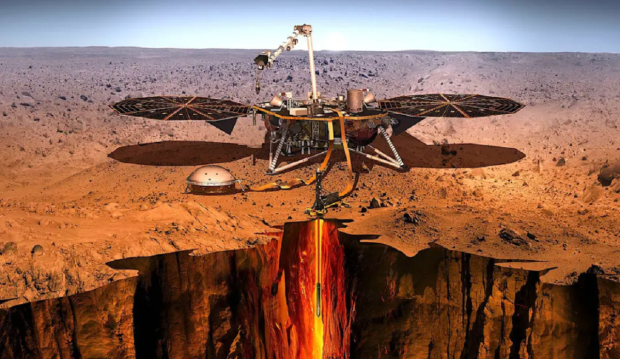NASA has many ways of observing Mars, and one of them is the agency's InSight lander, which was designed to measure the planet's interior and allow researchers to develop a better understanding of the history, present, and future of Mars.
In the past, the InSight lander, which first landed on Mars in November 2018, detected marsquakes and measured them with its seismometer, its primary scientific instrument. Now, according to a newly published study in the journal The Seismic Record, the InSight lander has detected two large marsquakes that have broken all previously set records. The first was detected on August 25, 2021, which was followed by the second on September 18, 2021.
The first marsquake was labeled S0976a and lasted for several seconds before passing. The InSight lander's instruments recorded a magnitude of 4.2. The second marsquake lasted much longer than the first, spanning a length of 94 minutes before passing. The 94-minute martian-quake is now the longest marsquake to have ever been detected by humans. Notably, both of the marsquakes came from the far side of Mars, with most of the already recorded marsquakes being traced back to sources of origin near the InSight lander.
"Not only are they the largest and most distant events by a considerable margin, S1000a has a spectrum and duration unlike any other event previously observed. They truly are remarkable events in the Martian seismic catalog," said the study's lead researcher Anna Horleston.
Jak's Top 3 Recommended Articles:
Read more: NASA confirms 1,000+ foot-wide asteroid will approach Earth this April
Read more: 17 solar flares cause Sun blast to hit Earth at nearly 2 million mph
Read more: Ukraine army hits jackpot, captures Russia's most modern equipment


